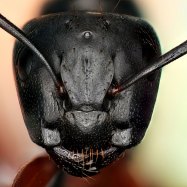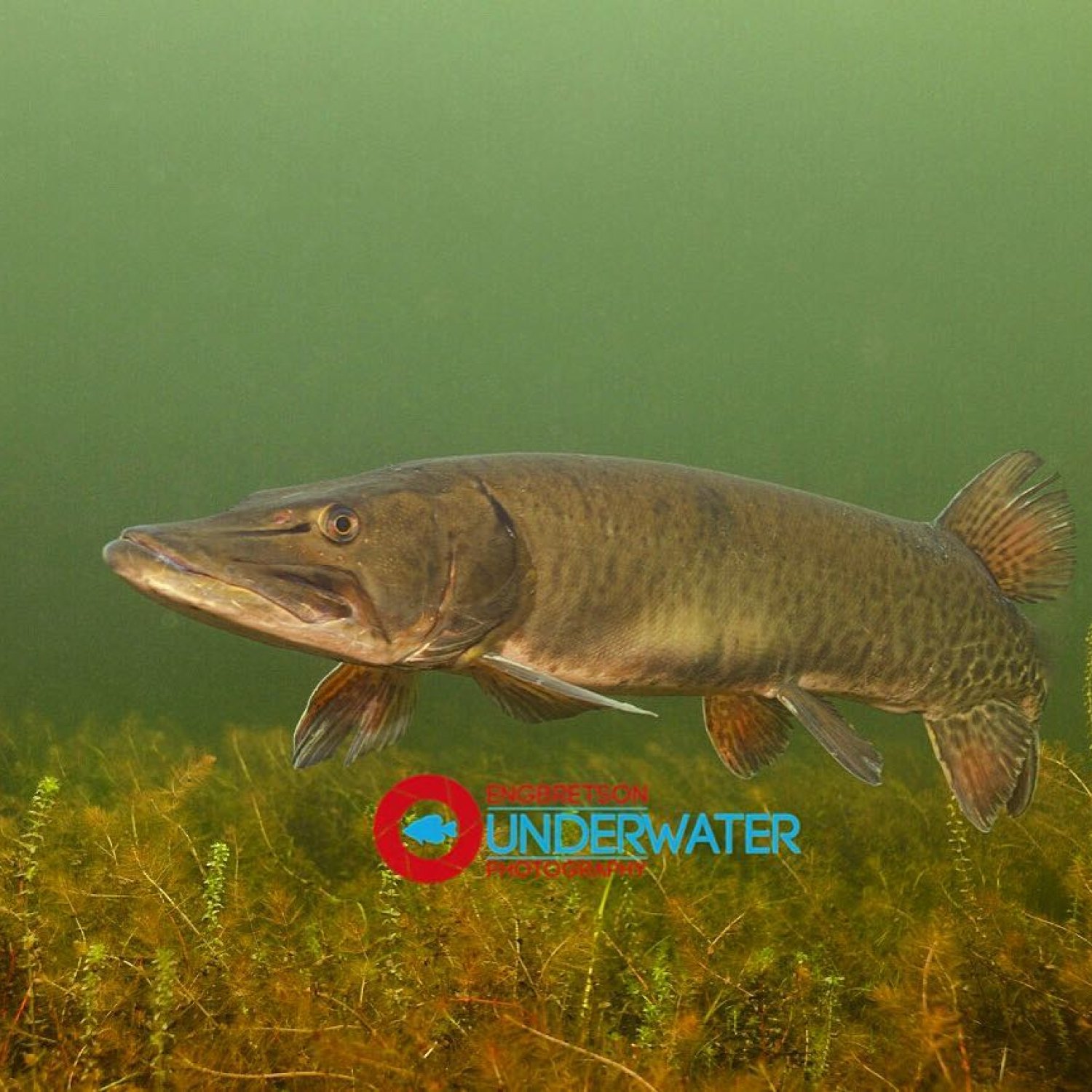
Muskellunge
Up to 6 feet
The Muskellunge, also known as Musky, is a popular fish with anglers in North America. It can grow up to 6 feet in length and belongs to the Esocidae family. With its long and slender body shape, the Musky is known for its powerful strikes and is often considered a challenging catch. Keep your eyes peeled for this elusive creature on your next fishing trip! #Muskellunge #Fishing #Angling #NorthAmerica
Animal Details Summary:
Common Name: Muskellunge
Kingdom: Animalia
Habitat: Freshwater lakes and rivers
Introduction
The Muskellunge, also known as the muskie, is a powerful and elusive fish that can be found in the freshwater lakes and rivers of North America. It is a member of the Esox genus, along with other predatory fish such as pike and pickerel. Its scientific name, Esox masquinongy, is derived from the Ojibwe language and means "ugly pike."This majestic fish is highly sought after by anglers for its size, strength, and fighting abilities Muskellunge. It is also a popular game fish, known for its challenging nature, making it a favorite among experienced fishermen. In this article, we'll dive deep into the world of the Muskellunge, exploring its characteristics, behavior, and significance in the ecosystem.
Taxonomy and Habitat
The Muskellunge belongs to the Animalia kingdom and Chordata phylum. It is a member of the Actinopterygii class, which includes all ray-finned fish, and the Esociformes order, which includes pike and mudminnows. Its family is Esocidae, which also encompasses the northern pike and the chain pickerel.The Muskellunge is native to North America and can be found in various bodies of water, including lakes, reservoirs, and rivers. It prefers clear, cool, and oxygen-rich waters with abundant vegetation and ample food sources. This formidable predator is most commonly found in lakes and rivers in the Midwest and Northeast regions of the United States and Southern Canada.
Physical Characteristics
One of the most striking features of the Muskellunge is its size Malayan Krait. It is a large fish, with some individuals reaching up to 6 feet in length and weighing over 60 pounds. Its body is long and slender, resembling that of a torpedo, with a single dorsal fin and a small adipose fin near the tail.The Muskellunge's coloration can vary, but it is typically a dark green or olive color with irregular markings or bars on its sides. Its scales are large and have a reflective quality, allowing it to blend in with its surroundings. This fish is known for its sharp teeth, which are perfect for grabbing and holding onto prey.
Feeding and Hunting Behavior
The Muskellunge is a carnivorous fish, with a diet that consists mostly of other fish, such as trout, perch, and bass. It is an opportunistic feeder and will go after anything that comes within its reach. Its sharp teeth and powerful jaws make it a formidable predator, capable of taking down prey that is almost its size.This fish is known for its ambush hunting behavior. It will patiently wait for its prey to come within striking distance, and then it will quickly strike, using its large mouth to swallow the prey whole. The Muskellunge is also known to follow its prey, sometimes for long distances, before attacking. This strategy, combined with its impressive speed and agility, makes it a very successful predator.
Geographical Distribution and Country of Origin
The Muskellunge is a native species of North America, specifically the United States and Canada. Its geographical distribution spans from the Great Lakes region, including Lake Michigan and Lake Huron, to the Appalachian Mountains and the eastern coast of Canada. It can also be found in some areas in the Mississippi River watershed and the St. Lawrence River.This majestic fish has also been introduced to other regions of the United States and Canada, such as New York, Pennsylvania, and Ontario, to provide more opportunities for anglers to catch this prized fish.
Role in the Ecosystem
The Muskellunge plays a crucial role in the ecosystem as a top predator. As an apex predator, it helps to keep the population of smaller fish in check, preventing overpopulation and maintaining a healthy balance in the aquatic environment. Its presence also promotes species diversity, as it preys on a variety of fish species.Additionally, the Muskellunge is an indicator species, which means its presence or absence can serve as a measure of the overall health of the ecosystem. Its decline could indicate issues such as pollution, overfishing, or habitat degradation.
Conservation Status
The Muskellunge is currently listed as a species of least concern on the International Union for Conservation of Nature (IUCN) Red List. However, this does not mean that its population is not at risk. The Muskellunge has a slow reproductive rate, and its numbers can decline rapidly due to overfishing, loss of habitat, and environmental pollution.Several conservation efforts are in place to protect this species, such as catch-and-release programs, restrictions on fishing seasons and equipment, and the preservation of essential habitats. It is important to continue monitoring and implementing conservation strategies to ensure the survival of the Muskellunge.
The Muskellunge as a Game Fish
The Muskellunge is a highly coveted game fish that attracts anglers from all over the world. Its large size, challenging nature, and elusive behavior make it a prime target for experienced fishermen. In fact, it is often referred to as the "fish of ten thousand casts" because of its difficulty to catch.To catch a Muskellunge, anglers must have the right equipment, including heavy-duty rods, reels, and lines capable of withstanding the fish's strength and power. They also need a lot of patience and persistence. A successful catch requires years of experience, perfect timing, and a bit of luck.
Threats and Challenges
Despite being a sought-after game fish, the Muskellunge faces several threats and challenges. One of the main threats is habitat loss and degradation due to pollution, the construction of dams, and the introduction of non-native species. These factors can disrupt the delicate balance of the ecosystem and directly impact the Muskellunge's ability to survive.Illegal poaching is also a major threat to the Muskellunge population. Many individuals are caught and killed for their large size and prized trophy potential. This illegal activity can have a significant impact on the fish's reproductive rate, and ultimately, the balance of the ecosystem.
The Future of the Muskellunge
The Muskellunge is a magnificent fish with a critical role in the aquatic ecosystem. However, its population is facing significant challenges, and its future is uncertain. It is crucial to continue to educate the public about the importance of this species and to implement conservation measures to protect its habitat and ensure its survival for future generations.Moreover, sustainable management practices, such as catch-and-release programs and strict fishing regulations, can help maintain healthy populations of Muskellunge while still allowing anglers to enjoy the thrill of catching this elusive fish.
Conclusion
In conclusion, the Muskellunge is a fascinating and influential fish in the freshwater ecosystems of North America. Its large size, aggressive behavior, and importance in the food chain make it a significant species worthy of protection and conservation efforts.As responsible stewards of the environment, it is our duty to preserve the habitat and promote sustainable fishing practices to ensure the Muskellunge's future. Let us continue to admire and respect this mighty fish, appreciating its role in the delicate balance of nature.

Muskellunge
Animal Details Muskellunge - Scientific Name: Esox masquinongy
- Category: Animals M
- Scientific Name: Esox masquinongy
- Common Name: Muskellunge
- Kingdom: Animalia
- Phylum: Chordata
- Class: Actinopterygii
- Order: Esociformes
- Family: Esocidae
- Habitat: Freshwater lakes and rivers
- Feeding Method: Carnivorous
- Geographical Distribution: North America
- Country of Origin: United States and Canada
- Location: North America
- Animal Coloration: Dark green to olive, with irregular markings or bars on sides
- Body Shape: Long and slender
- Length: Up to 6 feet
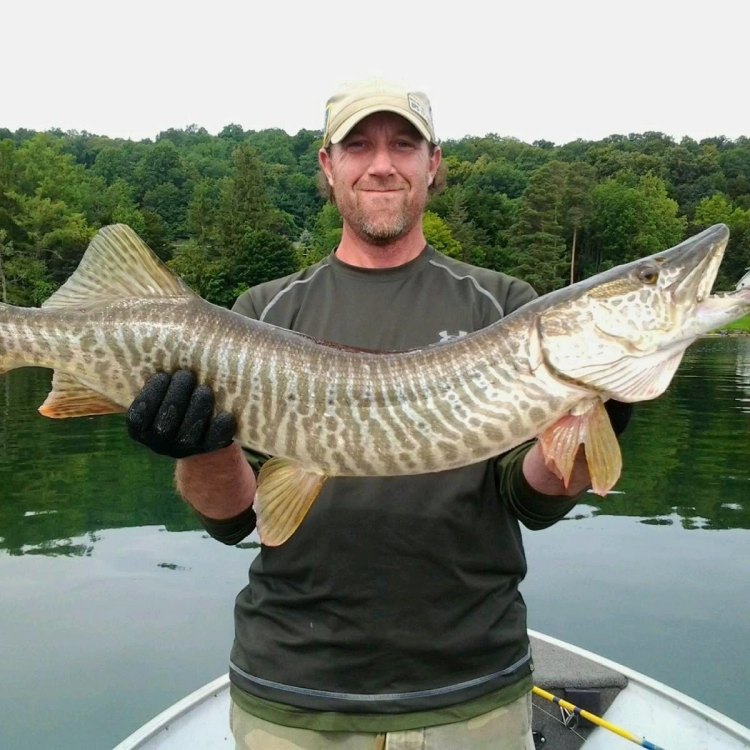
Muskellunge
- Adult Size: 40 to 50 inches
- Average Lifespan: Up to 25 years
- Reproduction: Sexual
- Reproductive Behavior: Spawning in shallow, weedy areas
- Sound or Call: Grunt or growl sound during mating
- Migration Pattern: Seasonal migration in search of suitable spawning grounds
- Social Groups: Solitary
- Behavior: Ambush predator
- Threats: Habitat loss, pollution, overfishing
- Conservation Status: Least Concern
- Impact on Ecosystem: Maintains balance in aquatic ecosystems as top predator
- Human Use: Sport fishing
- Distinctive Features: Large size, elongated body, sharp teeth
- Interesting Facts: It is known as the "fish of a thousand casts" due to its elusive nature and difficulty in catching
- Predator: Humans, larger fish
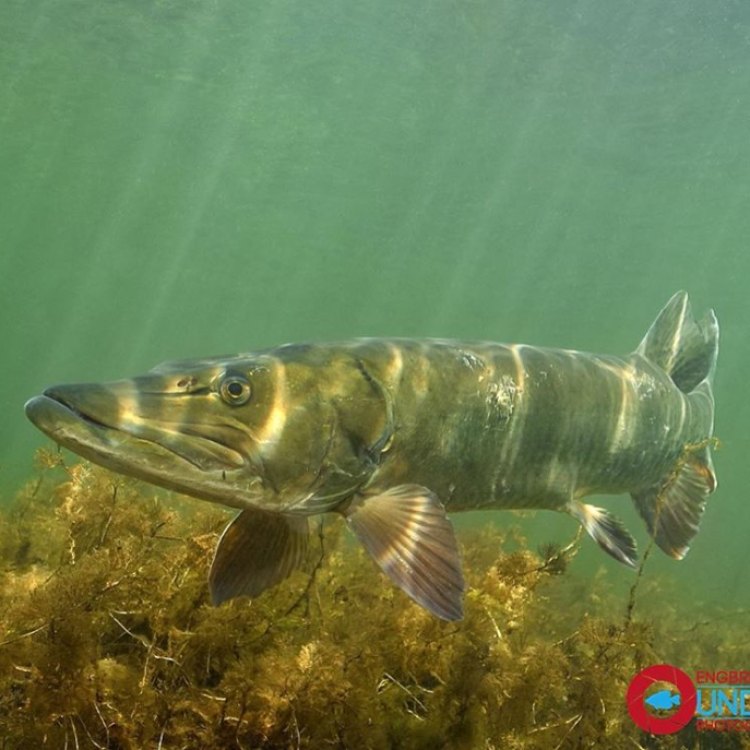
Esox masquinongy
The Mighty Muskellunge: A Master of Ambush and Balance in Aquatic Ecosystems
In the vast and diverse world of fish, one species stands out for its sheer size, unique breeding behavior, and vital role in maintaining balance in aquatic ecosystems. Meet the muskellunge, or musky for short, a freshwater fish native to North America. With an average lifespan of up to 25 years and lengths of 40 to 50 inches, this predatory fish is not one to be messed with.But beyond its imposing appearance and impressive size, the muskellunge has many other fascinating qualities that make it a true wonder of nature PeaceOfAnimals.Com. Let's dive in and uncover the unique features and behavior of this elusive fish.
An Elusive and Elongated Predator
The muskellunge, scientifically known as Esox masquinongy, is a member of the pike family and is closely related to the northern pike and the pickerel. Its name is derived from the Ojibwe word maashkinoozhe, meaning "ugly pike," which may be fitting to some, but others are captivated by its powerful and elongated body.As an ambush predator, the muskellunge relies on its sharp teeth and strong jaws to immobilize its prey, which includes smaller fish, frogs, and even small mammals like muskrats and minks. It is also known to be an opportunistic feeder, consuming whatever is available in its environment.
Its distinct features include a dark-colored body, elongated and cylindrical shape, and a flat snout with a large mouth at the end. The muskellunge also has a unique color pattern, with black bars adorning its olive-green sides, earning it the nickname "tiger of the freshwater."
Elusive Reproduction Behavior
Like most fish, the muskellunge's reproductive behavior is sexual, with males and females seeking each other out for mating. However, unlike other fish that breed in open water, muskellunge has a unique spawning behavior Machaeroides.During the spring, muskies migrate in large numbers to shallow and weedy areas, where females lay their eggs on the bottom. The males then fertilize the eggs, and the female covers them with vegetation to protect them from predators. This behavior is crucial for the survival of the species since it ensures that the eggs are not scattered, increasing the chances of survival.
The Sound of Breeding
During the spawning season, muskies are known to produce a distinctive grunt or growl sound, which can be heard in the water. This sound is believed to be part of their mating ritual and can be quite loud, with some reports claiming to hear it from shore.Interestingly, muskies have a unique vocal organ, called the gas bladder, that they use to produce these sounds. This organ is usually filled with air, which the muskellunge can control, enabling them to create this distinct mating call.
Seasonal Migrations
In addition to their breeding migration, muskellunge also exhibit seasonal migrations in search of suitable spawning grounds. These migrations are heavily influenced by environmental factors such as temperature and water levels.Muskies are also known to move to deeper waters in the winter, as they are cold-blooded and need to adjust to the water temperature. This behavior also helps them conserve energy during the colder months when food may be scarce.
A Solitary Existence
Unlike some other fish species that flock together, muskies are solitary creatures. They typically prefer to hunt and live alone, with males and females only coming together for mating purposes. This behavior is believed to be an adaptation to their predatory nature, as hunting alone increases their chances of catching prey.Threats and Conservation Status
As with many other species, muskellunge populations are facing threats from human activities, including habitat loss, pollution, and overfishing. With their long lifespan and slow reproductive rate, muskies are particularly vulnerable to these threats, making conservation efforts crucial for their survival.Fortunately, muskellunge is not currently listed as an endangered species, and its conservation status is classified as least concern. However, continued efforts to protect their habitat and regulate fishing regulations are necessary to ensure their numbers remain stable.
A Vital Role in Ecosystem Balance
Aside from being a top predator in their ecosystems, muskellunge also plays a crucial role in maintaining balance in aquatic environments. As a predatory fish, they help control the population of smaller fish, preventing overpopulation and maintaining a healthy balance in the food chain.In fact, studies have shown that in lakes without muskellunge, there is a higher number of "rough fish" or undesirable species that can negatively impact the ecosystem. This makes the muskellunge an essential species to protect for the overall health of aquatic ecosystems.
Human Use and Fishing
Muskellunge has been a popular game fish for centuries, with Native American tribes using it as a food source and Europeans fishing it for sport. Today, muskies are still highly sought after by anglers, but their elusive and unpredictable nature has earned them the nickname "the fish of a thousand casts."Due to their large size and strength, muskies are a prized catch for sport fishing enthusiasts. They are known for putting up a fierce fight when hooked, making them a thrilling catch for any fisherman.
However, with their slow reproductive rate and vulnerability to overfishing, catch-and-release is encouraged to ensure the sustainability of their populations. Careful handling techniques and the use of barbless hooks can also minimize harm to this magnificent fish.
The Top Predator's Predators
Despite their impressive size and predatory nature, muskellunge also have their own predators. Humans remain their biggest threat, with overfishing and habitat destruction being the main culprits. But larger fish, such as northern pike and walleye, are also known to prey on young muskellunge.The Elusive Muskellunge
The muskellunge may be known as "the fish of a thousand casts," but that only adds to its allure and mystique. This giant predator continues to amaze and captivate us with its unique features and behavior. And with efforts to protect its populations, hopefully, we'll continue to marvel at the mighty musky for generations to come.
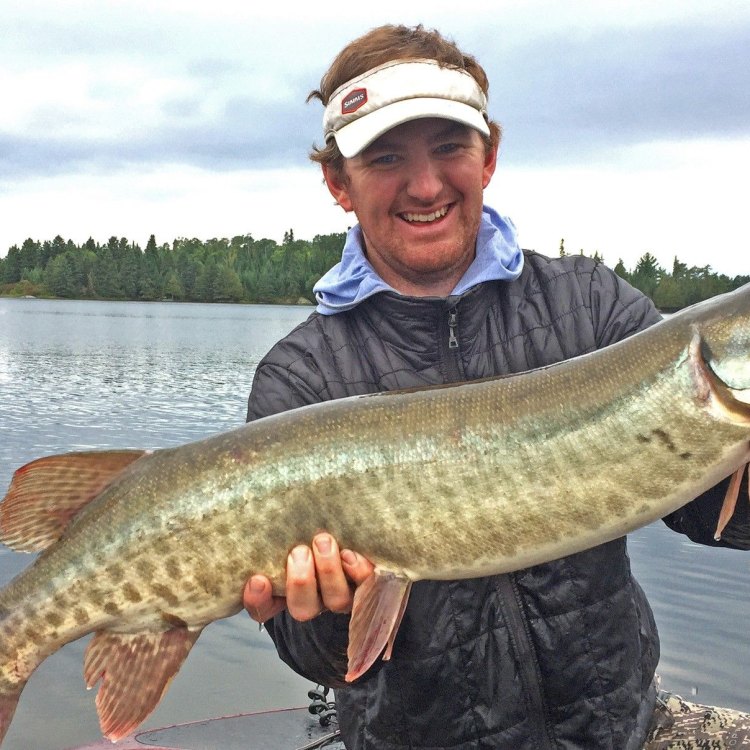
Introduction
Disclaimer: The content provided is for informational purposes only. We cannot guarantee the accuracy of the information on this page 100%. All information provided here may change without prior notice.









